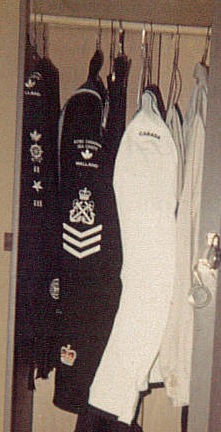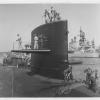-
Posts
2,570 -
Joined
-
Last visited
About AON

- Birthday November 15
Contact Methods
-
Website URL
modelshipwrightsofniagara.weebly.com
Profile Information
-
Gender
Male
-
Location
Niagara Region, Ontario, Canada
-
Interests
Spin and fly fishing;
Violin and fiddle (you need to understand the difference to get this);
Wood carving;
Reading historical/fiction;
Use to do a lot of sailing and hunting when I was much younger.
-
 AON reacted to a post in a topic:
Chris Watton and Vanguard Models news and updates Volume 2
AON reacted to a post in a topic:
Chris Watton and Vanguard Models news and updates Volume 2
-
 AON reacted to a post in a topic:
Chris Watton and Vanguard Models news and updates Volume 2
AON reacted to a post in a topic:
Chris Watton and Vanguard Models news and updates Volume 2
-
 AON reacted to a post in a topic:
HM Cutter Alert by Thukydides - Vanguard Models - 1:64 - first build
AON reacted to a post in a topic:
HM Cutter Alert by Thukydides - Vanguard Models - 1:64 - first build
-
 daHeld73 reacted to a post in a topic:
HMS Bellerophon 1786 by AON – scale 1:64 – 74 gun 3rd Rate Man of War, Arrogant Class
daHeld73 reacted to a post in a topic:
HMS Bellerophon 1786 by AON – scale 1:64 – 74 gun 3rd Rate Man of War, Arrogant Class
-
 daHeld73 reacted to a post in a topic:
HMS Bellerophon 1786 by AON – scale 1:64 – 74 gun 3rd Rate Man of War, Arrogant Class
daHeld73 reacted to a post in a topic:
HMS Bellerophon 1786 by AON – scale 1:64 – 74 gun 3rd Rate Man of War, Arrogant Class
-
 daHeld73 reacted to a post in a topic:
HMS Bellerophon 1786 by AON – scale 1:64 – 74 gun 3rd Rate Man of War, Arrogant Class
daHeld73 reacted to a post in a topic:
HMS Bellerophon 1786 by AON – scale 1:64 – 74 gun 3rd Rate Man of War, Arrogant Class
-
 daHeld73 reacted to a post in a topic:
HMS Bellerophon 1786 by AON – scale 1:64 – 74 gun 3rd Rate Man of War, Arrogant Class
daHeld73 reacted to a post in a topic:
HMS Bellerophon 1786 by AON – scale 1:64 – 74 gun 3rd Rate Man of War, Arrogant Class
-
 daHeld73 reacted to a post in a topic:
HMS Bellerophon 1786 by AON – scale 1:64 – 74 gun 3rd Rate Man of War, Arrogant Class
daHeld73 reacted to a post in a topic:
HMS Bellerophon 1786 by AON – scale 1:64 – 74 gun 3rd Rate Man of War, Arrogant Class
-
 daHeld73 reacted to a post in a topic:
HMS Bellerophon 1786 by AON – scale 1:64 – 74 gun 3rd Rate Man of War, Arrogant Class
daHeld73 reacted to a post in a topic:
HMS Bellerophon 1786 by AON – scale 1:64 – 74 gun 3rd Rate Man of War, Arrogant Class
-
 daHeld73 reacted to a post in a topic:
HMS Bellerophon 1786 by AON – scale 1:64 – 74 gun 3rd Rate Man of War, Arrogant Class
daHeld73 reacted to a post in a topic:
HMS Bellerophon 1786 by AON – scale 1:64 – 74 gun 3rd Rate Man of War, Arrogant Class
-
 AON reacted to a post in a topic:
HM Cutter Alert by Thukydides - Vanguard Models - 1:64 - first build
AON reacted to a post in a topic:
HM Cutter Alert by Thukydides - Vanguard Models - 1:64 - first build
-
 AON reacted to a post in a topic:
HM Cutter Alert by Thukydides - Vanguard Models - 1:64 - first build
AON reacted to a post in a topic:
HM Cutter Alert by Thukydides - Vanguard Models - 1:64 - first build
-
 AON reacted to a post in a topic:
HMS Indefatigable 1794 by Glenn-UK - Vanguard Models - 1:64
AON reacted to a post in a topic:
HMS Indefatigable 1794 by Glenn-UK - Vanguard Models - 1:64
-
 AON reacted to a post in a topic:
HMS Indefatigable 1794 by Glenn-UK - Vanguard Models - 1:64
AON reacted to a post in a topic:
HMS Indefatigable 1794 by Glenn-UK - Vanguard Models - 1:64
-
 AON reacted to a post in a topic:
Santos Dumont No. 18 Hydroplane 1907 by Greg Davis - Scale 1:16
AON reacted to a post in a topic:
Santos Dumont No. 18 Hydroplane 1907 by Greg Davis - Scale 1:16
-
 AON reacted to a post in a topic:
Santos Dumont No. 18 Hydroplane 1907 by Greg Davis - Scale 1:16
AON reacted to a post in a topic:
Santos Dumont No. 18 Hydroplane 1907 by Greg Davis - Scale 1:16
-
 AON reacted to a post in a topic:
Santos Dumont No. 18 Hydroplane 1907 by Greg Davis - Scale 1:16
AON reacted to a post in a topic:
Santos Dumont No. 18 Hydroplane 1907 by Greg Davis - Scale 1:16
-
 mtaylor reacted to a post in a topic:
HMS Indefatigable 1794 by Glenn-UK - Vanguard Models - 1:64
mtaylor reacted to a post in a topic:
HMS Indefatigable 1794 by Glenn-UK - Vanguard Models - 1:64
-
 Mr Whippy reacted to a post in a topic:
HMS Indefatigable 1794 by Glenn-UK - Vanguard Models - 1:64
Mr Whippy reacted to a post in a topic:
HMS Indefatigable 1794 by Glenn-UK - Vanguard Models - 1:64
-
 Glenn-UK reacted to a post in a topic:
HMS Indefatigable 1794 by Glenn-UK - Vanguard Models - 1:64
Glenn-UK reacted to a post in a topic:
HMS Indefatigable 1794 by Glenn-UK - Vanguard Models - 1:64
-
Like the hot sauce... I use it everywhere too!
- 884 replies
-
- hahn
- oliver cromwell
-
(and 1 more)
Tagged with:
-
The camera doesn't lie. I see no blemishes at all. Well done! When will you be scheduling classes?
- 479 replies
-
- vanguard models
- alert
-
(and 1 more)
Tagged with:
-
First let me say I haven't done a miniature eye splice (yet) and I am impressed with anyone that manages it so well. With full size rope, I find that gripping it either side of where the eye splice will be, twisting to unravel the strands and pushing both hands together will open the strands to get a spike or fid into and hold it. I imagine with small scale rope (1:64) the same will likely be true, the needle being your fid or spike, though a third hand might be useful. This might make it easier to make sure you don't pass a strand through a strand. When the splice is done I would put it on the floor, step on it with my shoe, and roll it back an forth under my body weight to tighten it up. I imagine rolling the scaled down version between a pinched thumb and finger would do the same thing. One day I will have to try this all for myself.
- 479 replies
-
- vanguard models
- alert
-
(and 1 more)
Tagged with:
-

Period Scale Model Masting and Rigging Tables
AON replied to DaveBaxt's topic in Masting, rigging and sails
I honestly do not know. How quickly did people receive the information and actually implement it? -

Period Scale Model Masting and Rigging Tables
AON replied to DaveBaxt's topic in Masting, rigging and sails
Dave You are going to chase your tail on this one. These are rules of thumb they worked to in that age... but they weren't chiselled in stone if you get my drift. Also, getting it dead nuts on seems really important right now, it took me about two years to get comfortable with working to a reduced scale and the "close enough" concept. The difference between the two calculations at 1:64 scale is indistinguishable to look at and absolutely no one is going to take a vernier to you model but you. If you can actually make your mast exactly to scale your better than me. It is akin to a ship build contract stating what length and breadth the vessel was to be built to... and when done they wrote in the actual dimensions on the drawing. -

Period Scale Model Masting and Rigging Tables
AON replied to DaveBaxt's topic in Masting, rigging and sails
Dave I had a quick look at your sheet. If I look at the data for the main mast in cell C13 that reads 48.94 feet the formula for that cell is =AG136 Cell AG136 is hidden. If I scroll to where it should be (down to line 136 and across to row AG and unhide it I see all the calculation cells. Cell AF103 hasn't populated the length of the deck properly. It populated the beam so the formula should be (Beam + Deck Length)/2= main mast length but the cell is telling it to add (Beam + Beam)/2 -
I looked in The Fully Framed Model vol.4 by David Antscherl, The Anatomy of Nelson's Ships by C Nepean Longridge, The Young Sea Officer's Sheet Anchor by Darcy Lever, The Masting and Rigging of English Ships of War 1625-1860 by James Lee, and the back chapters of Rees's Naval Architecture. Though difficult to tell by looking at some of the images, some straps/strops were definitely served. Like the Jeer and Quarter blocks. Others on smaller blocks on the yards don't seem to be served. Long strops seemed to be served whereas short strops on blocks forming a becket (eye) don't seem to be served. At this moment it is all very confusing to me. Possibly someone more experienced could offer guidance.
- 479 replies
-
- vanguard models
- alert
-
(and 1 more)
Tagged with:
-
I will crack open some books this evening and get back to you.
- 479 replies
-
- vanguard models
- alert
-
(and 1 more)
Tagged with:
About us
Modelshipworld - Advancing Ship Modeling through Research
SSL Secured
Your security is important for us so this Website is SSL-Secured
NRG Mailing Address
Nautical Research Guild
237 South Lincoln Street
Westmont IL, 60559-1917
Model Ship World ® and the MSW logo are Registered Trademarks, and belong to the Nautical Research Guild (United States Patent and Trademark Office: No. 6,929,264 & No. 6,929,274, registered Dec. 20, 2022)
Helpful Links
About the NRG
If you enjoy building ship models that are historically accurate as well as beautiful, then The Nautical Research Guild (NRG) is just right for you.
The Guild is a non-profit educational organization whose mission is to “Advance Ship Modeling Through Research”. We provide support to our members in their efforts to raise the quality of their model ships.
The Nautical Research Guild has published our world-renowned quarterly magazine, The Nautical Research Journal, since 1955. The pages of the Journal are full of articles by accomplished ship modelers who show you how they create those exquisite details on their models, and by maritime historians who show you the correct details to build. The Journal is available in both print and digital editions. Go to the NRG web site (www.thenrg.org) to download a complimentary digital copy of the Journal. The NRG also publishes plan sets, books and compilations of back issues of the Journal and the former Ships in Scale and Model Ship Builder magazines.








